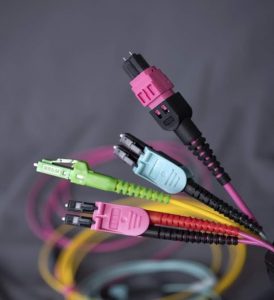January 1, 2025
January 1, 2025
Copyright 2023, IT Voice Media Pvt. Ltd.
All Rights Reserved

 R&M is helping users ensure simpler insertion and removal of FO patch cords. Network technicians also operate the new push-pull mechanism for MPO and LC connectors using the rear strain relief sleeve. The recently launched technology is called QuickRelease, or QR for short. It helps increase the packing density of FO ports in network cabinets without having to make any compromises in terms of operability. R&M is the globally active developer and provider of cabling systems for high-quality network infrastructures based in Wetzikon, Switzerland.
R&M is helping users ensure simpler insertion and removal of FO patch cords. Network technicians also operate the new push-pull mechanism for MPO and LC connectors using the rear strain relief sleeve. The recently launched technology is called QuickRelease, or QR for short. It helps increase the packing density of FO ports in network cabinets without having to make any compromises in terms of operability. R&M is the globally active developer and provider of cabling systems for high-quality network infrastructures based in Wetzikon, Switzerland. The functions of the strain relief sleeve of the QR connectors have been extended. The strain relief sleeve now not only serves as radius limitation and of course strain relief sleeve, but can also be used as a control element. It guides the plug. Network technicians slide and pull back the strain relief sleeve to lock or release the QR connector in the patch panel. With the QR mechanism, the distance between the coupling windows which used to be required for the handle is now no longer necessary. In the case of MPO-QR connections, the packing density thus increases to 120 ports per height unit, 50% more than with conventional patch panels. The LC-QR duplex also enables a packing density of 120 ports or 240 fibers per height unit. This means that up to 10,080 fibers can be connected in a network cabinet with 42 height units.
The functions of the strain relief sleeve of the QR connectors have been extended. The strain relief sleeve now not only serves as radius limitation and of course strain relief sleeve, but can also be used as a control element. It guides the plug. Network technicians slide and pull back the strain relief sleeve to lock or release the QR connector in the patch panel. With the QR mechanism, the distance between the coupling windows which used to be required for the handle is now no longer necessary. In the case of MPO-QR connections, the packing density thus increases to 120 ports per height unit, 50% more than with conventional patch panels. The LC-QR duplex also enables a packing density of 120 ports or 240 fibers per height unit. This means that up to 10,080 fibers can be connected in a network cabinet with 42 height units.